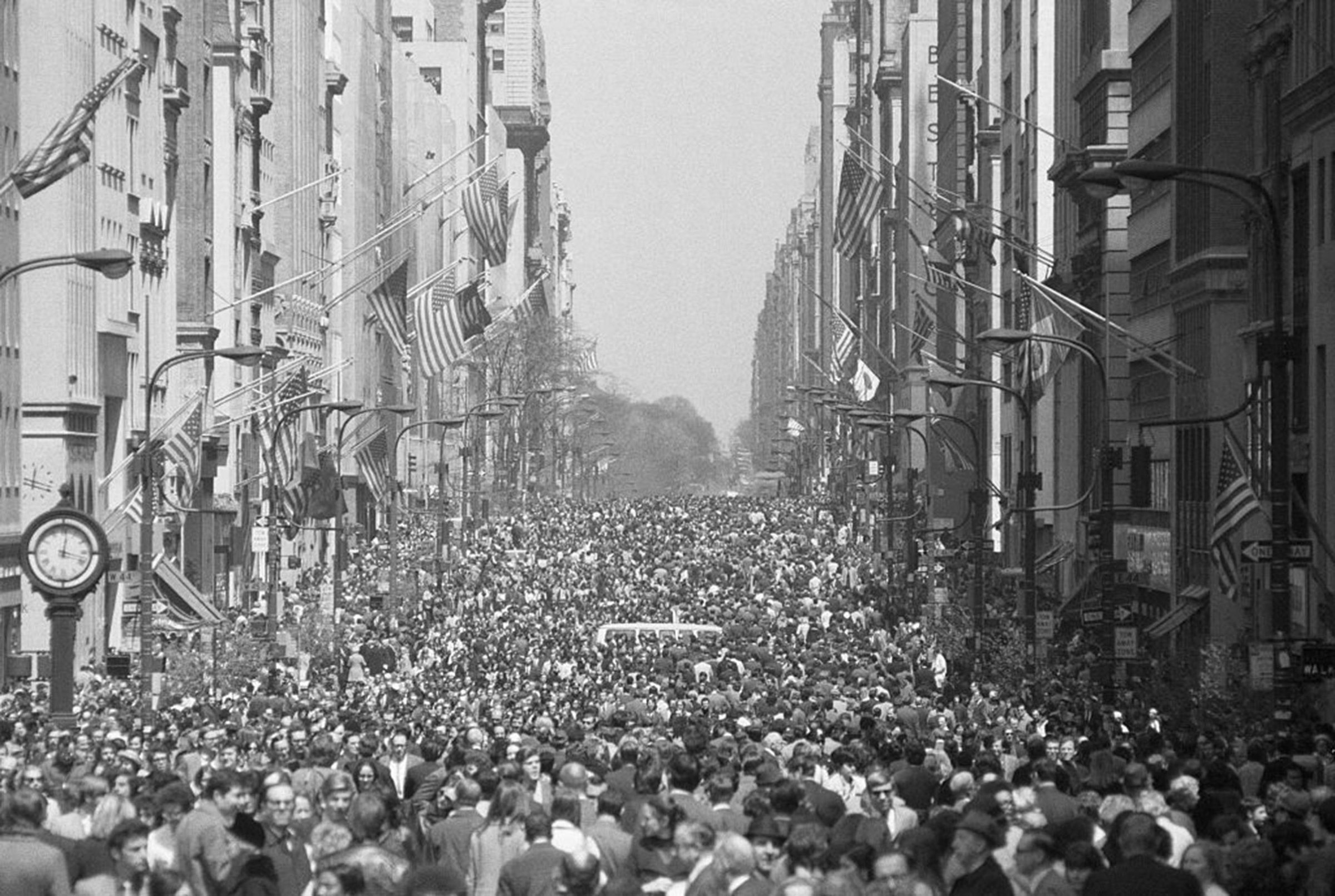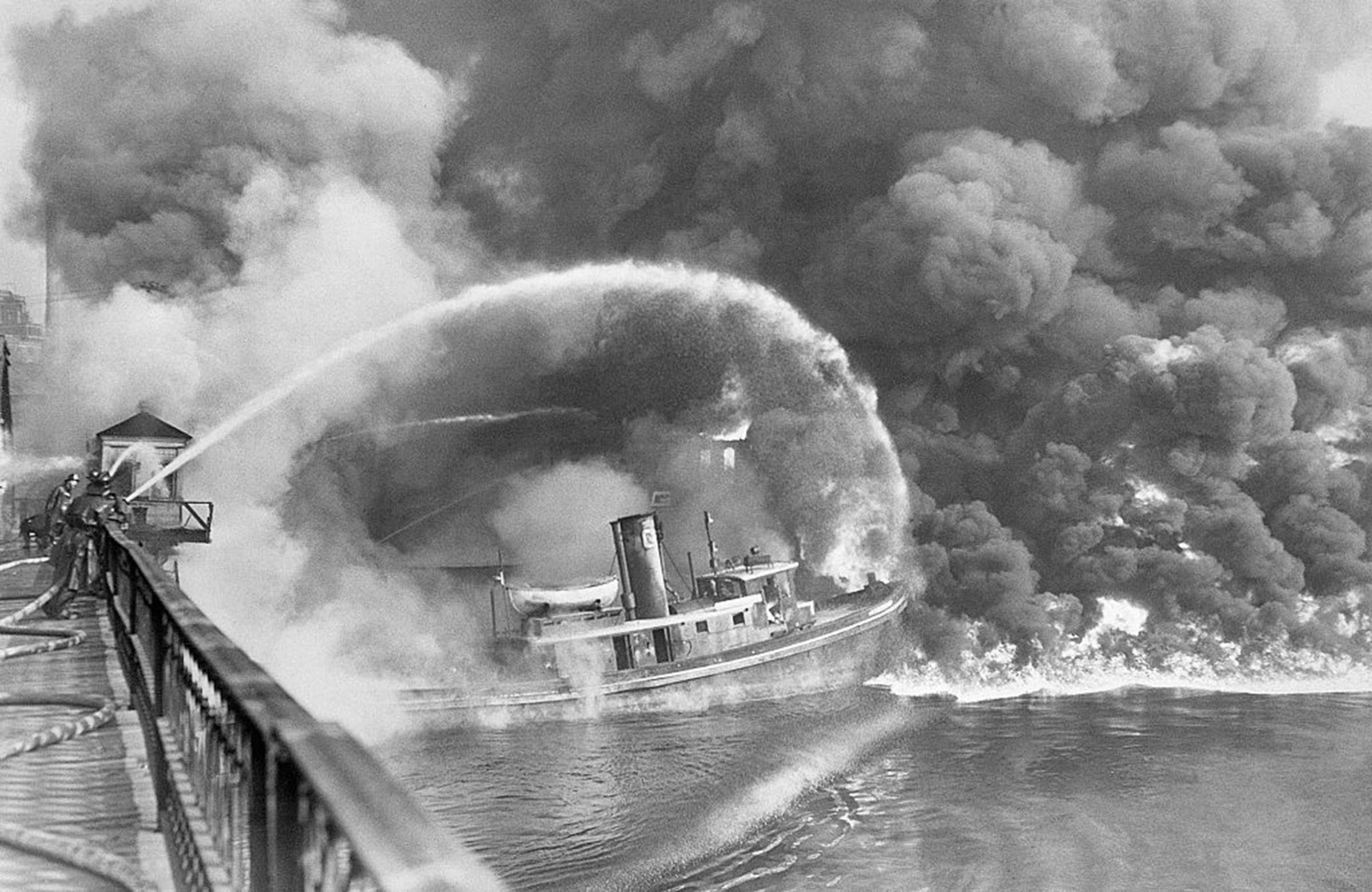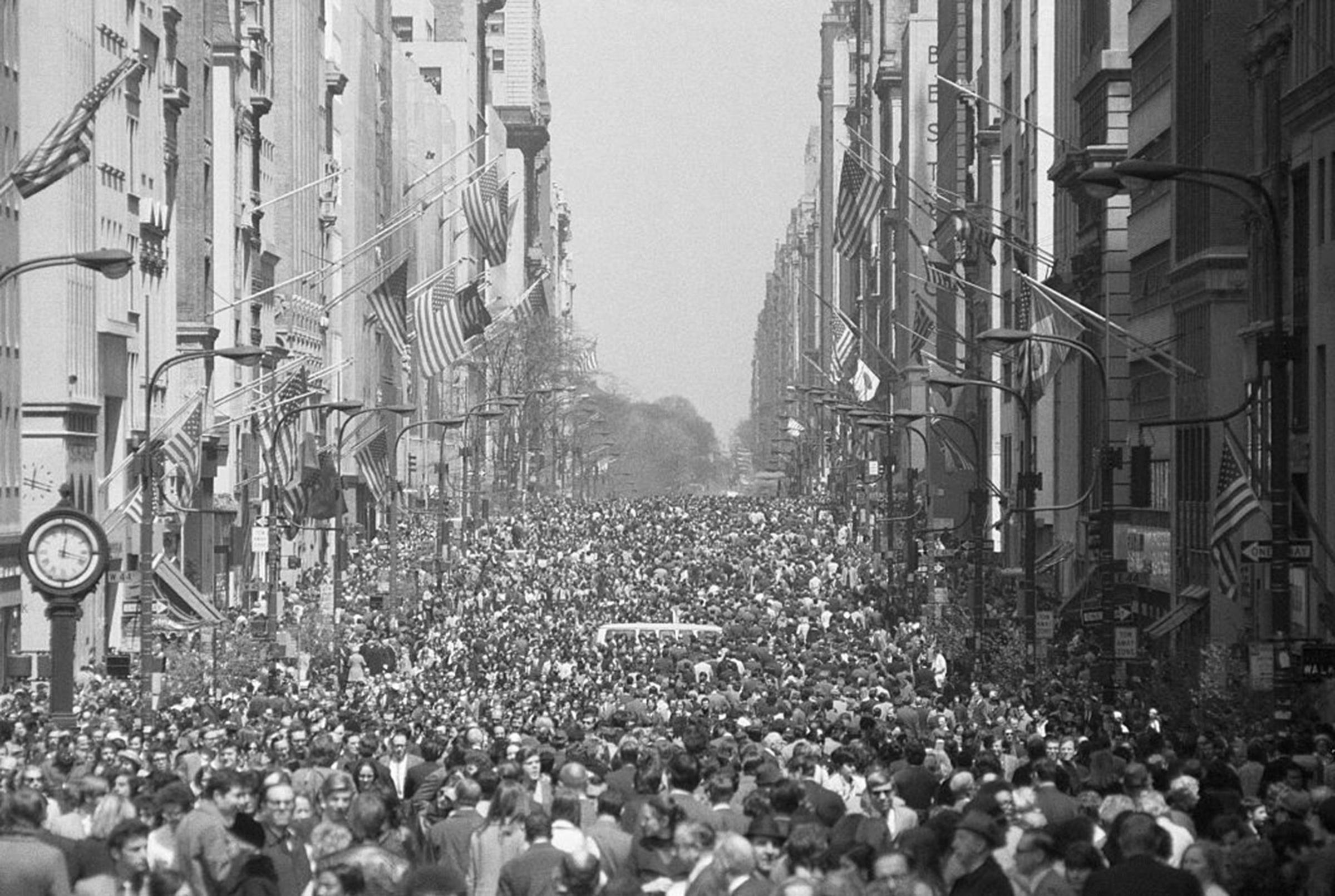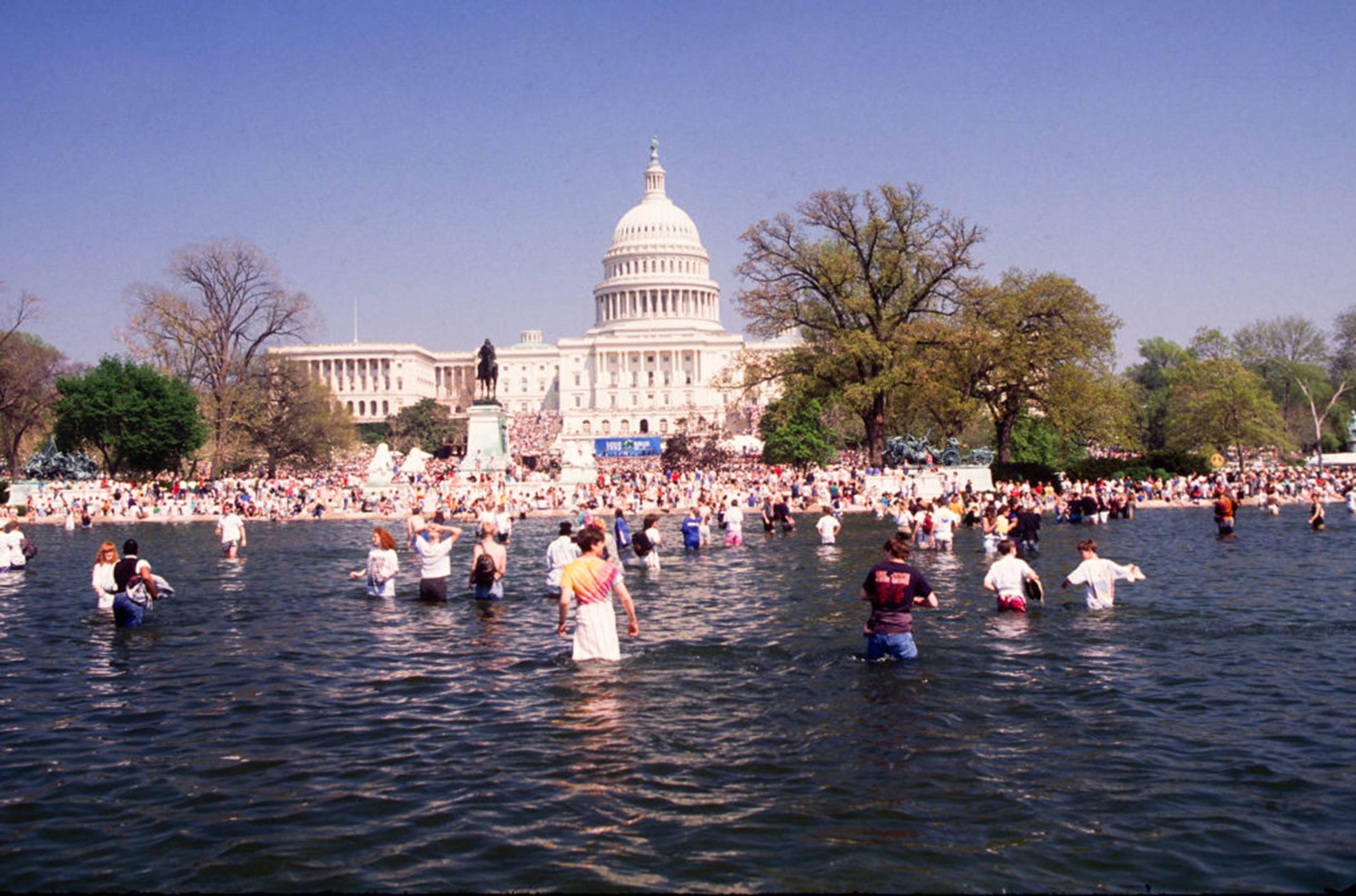
Nearly 50 years after 20 million Americans participated in the first Earth Day on April 22, 1970, more than 190 countries mark the annual day for raising awareness of environmental causes. And the stakes only grow as the years go by.
Though Earth Day has been dogged by rumors that it was founded by a murderer and as communist propaganda, the truth is much more straightforward — but no less fascinating. TIME spoke to Denis Hayes, a real organizer of the first Earth Day, dubbed “Mr. Earth Day” by the magazine in 1999. Hayes is now the president of the Bullitt Foundation, which doles out grants to environmental efforts.
Here, he tells the true story of founding of Earth Day, its proudest accomplishments and the work that still needs to be done.
TIME: Where did the idea for the first Earth Day come from?
HAYES: A number of issues basically all came to a head by the late ’60s, starting in 1962, with Rachel Carson publishing Silent Spring, about the dangers of pesticides. In 1969, an oil spill in the elite community of Santa Barbara, Calif., brought it home to people in a terribly visual way — they saw animals covered in goo, people trying to get it off, and you watched them die on camera. Then we had the fire on the Cuyahoga River; the juxtaposition with water, which puts out fire, made a splash. Then interstate highways were being built. That’s when people who didn’t self-identify as conservationists were out there trying to protect their neighborhoods from horrible air pollution. The stuff coming out of tailpipes was all from leaded gasoline, poisoning their children. At the same time that people were trying to talk about organic produce and the impact of pesticides on the foods that people were eating, those pesticides were being sprayed onto the backs of farm workers, so the Chicano movement saw the environmental issues as a way to mobilize public support for their objectives.
What we did was take all of those myriad strands, including wildlife protection issues, and wove them all together. It sounds strange today, but back then, the folks involved with those various causes didn’t think of themselves as having anything in common with one another. No one was asking that question at the end of the 1970s.

How was the first Earth Day organized?
Senator [Gaylord] Nelson reached out to me to build his staff and organize it. I was the most senior of the paid staff and I was 25 years old. Youthful vitality and passion forms the engine of these things.
One of the secrets of Earth Day is that the head of the United Automobile Workers union gave us a budget for an 800 number so we could communicate directly with organizers. Walter Philip Reuther [the head of the UAW] was a genuinely progressive guy who cared about workplace conditions and supported public transit because his workers were making the buses for GM. He was horrified by the pollution coming out of the tailpipes of cars. He supported legislation like the Clean Air Act to protect the industry from people refusing to buy these cars. We were operating on a shoestring budget, so the ability to make free phone calls made it possible for us to be in instant communication with people in the biggest cities.
Gaylord thought something similar to the youth-dominated anti-war movement could be done in the environmental movement, so I went out and hired a number of superb, experienced organizers who had been in anti-war, Hispanic and civil rights movements. But there was almost no interest in our cause on college campuses because we had a war going on. So I looked back at the mail to the Senator’s office, and it was overwhelmingly from relatively young women, mostly college educated, with one or two kids in a single-wage-earner family, with time on their hands, who had gotten frustrated by not being involved in the social tumult of the era and who were deeply affected by environmental threats to their children. They formed a real nexus we organized around. Once the thing got visibility, and it became clear this was a vehicle for change, then the students climbed on board afterwards.

Why is Earth Day on April 22?
[The rationale] was straight forward. This whole thing was envisioned by Senator Gaylord Nelson as a campus teach-in, so it was all about making sure this would be attractive enough to the largest number of college students. He chose the date before he hired me. He came from Wisconsin, which has cold winters, and he wanted to find a date late enough in the year that a teach-in wouldn’t be snowed in, but early enough that college students wouldn’t be cramming for final exams. And he wanted it to be in the middle of the week so people wouldn’t be away on weekend trips. So, he chose a Wednesday near the end of April, and that Wednesday happened to be April 22. Wednesday, candidly, is a terrible day for something other than an environmental teach-in. I live in Seattle; nine out of 10 times there’s a torrential rainstorm at that time of year. It’s a terrible day for organizing stuff outside. After Earth Day was such a spectacular success, it started appearing on calendars. There’s no way to change the date. I’ve had people beg me to declare it’s the spring equinox or summer solstice, but we’re stuck with it.
How did Earth Day get its name?
Madison Avenue. A progressive advertising guy stopped by our office asking, ‘Anything I can do to help?’ I said, well, in brand terms, I think this teach-in thing isn’t going anyplace, and it’s not relevant to the folks who are most responsive to environmental issues. Why don’t you think of ways for us to re-brand it? A couple of weeks later he comes back with some print-outs on newsprint of ads with new names. He suggested names like Ecology Day, E-Day, Environment Day, Earth Day and Green Day. We all sat around with pizza and beer one night and tried to figure out which one would resonate, and Earth Day just sounded right. Fortuitously, Earth Day turned out to be something that translated beautifully in every language.
What was the role in Earth Day’s founding of Ira Einhorn, who was convicted of murder in 2002?
I thought that idea had been long buried. He was onstage as an announcer of the Philadelphia Earth Day — a marginal character in one Earth Day in one city. There’s no way you could think of him as the founder, even of the Earth Day in Philadelphia. If you asked me to name 50 people really crucial to that organizing of that first Earth Day, he certainly wouldn’t be on that list.
Holly [Maddux, of whose murder Einhorn was convicted] was a beautiful, wonderful, gracious person.
How Did Earth Day Influence the Nixon Administration?
The environmentalist in the White House was Nixon’s domestic policy advisor John Ehrlichman. Before Watergate, he pushed for everything that was progressive that came out of the White House and pretty much across the board. I had actually known him before he got into the White House and we interacted occasionally when he was in the White House.
One of his sons was a paralegal who worked for me at a law firm in Silicon Valley, and one day Ehrlichman takes us out to dinner. This was after he got out of the slammer. He tells this story about how on Earth Day in 1970, Nixon looked out the window and saw this giant crowd on the mall and went out and tried to mingle, but he was incredibly socially awkward. Then, he saw on television the gigantic crowd that formed when we shut down Fifth Avenue in Manhattan, and the Mayor of New York John Lindsay, a Republican, was standing on a platform, talking about this environmental stuff.
Here’s when it becomes iffy because it is in Ehrlichman’s interest to tell me this story because it puts him in a good light, and my interest to believe the story because it makes me very influential. Nixon says, What am I going to do become a player here? Ehrlichman reminded him of a commission that Nixon had set up when he was first elected, to reorganize government. He suggested we create a new agency that pulls together the environmental initiatives that the various agencies are doing. Create an Environmental Protection Agency with an executive order, and suddenly you’re a major player. You might even save some money by making it more efficient. According to Ehrlichman, that’s how, on Earth Day, they made the decision that they later implemented to create the EPA.

How do you think Earth Day has held up over the years?
The weakness of Earth Day is the “day” concept. When you do something every year, it can become tired and used for unrelated reasons. In the 1960s — before we had cable news and social media and an avalanche of information — a march to the Pentagon, or from Selma to Montgomery, would get enough visibility for long enough that it left a change in the public consciousness. In none of those cases was something done on that day, but you create a climate in which something that was previously impossible becomes almost inevitable.
Have there been any failed Earth Days?
The Earth Day that took place in 1990, after the Exxon Valdez oil spill, was probably the second most important Earth Day. The main theme was climate change and to move aggressively towards a renewably powered future. But we didn’t have a wave there. We were trying to create a wave from basically nothing but intellectual discourse. Did we succeed? The answer to that nearly 30 years later is pretty obvious, though I’m not sure there was a way it could succeed.

What would you say has been the legacy of Earth Day?
The big advances were all within five years of that first Earth Day: an amended Clean Air Act; the Clean Water Act; the Safe Drinking Water Act; the Endangered Species Act; the Marine Mammal Protection Act; the Resource Conservation and Recovery Act (RCRA). With that early wave of environmental legislation I’m not letting any cat out of the bag out of the bag when I say we didn’t know what we were doing. We really did the best that we could but everyone thought, mistakenly, that we’d pass it, see what worked and what didn’t work, and then go back three or four years later and revise it.
A great many people are buying “greener” cars and light bulbs, and choosing how many children to have because of environmental values. Look at the explosive growth of solar energy, wind power, the dramatic cost reductions of battery and other forms of storage innovations in smart utility grids. There’s been a profound cultural shift. Most public, private and religious schools observe Earth Day. Kids go home and are talking to their parents about this environmental stuff, and that’s important because almost every parent wants to be a hero to their kids.
What’s the future of Earth Day?
To make climate change an issue we will vote on. I’m unaware of any important elected official who has ever lost office because of their position on climate change.
We actually did something similar in the 1970 elections: we selected 12 members of Congress with abysmal environmental records who had an important environmental issue in their district and who won by small margin. We declared them the dirty dozen. When George Fallon, a Maryland Democrat and chairman of the House public works committee, was defeated in a primary on an environmental issue, that was a shot heard through the halls of Congress. Seven out of the 12 were defeated. That got us the Clean Air Act amendments.
That’s what we need today. The most recent reports on climate change are a little more frightening than the ones the year before. Climate change is as important as health care and the status of the economy. We’re talking about the future of life.
More Must-Reads from TIME
- Cybersecurity Experts Are Sounding the Alarm on DOGE
- Meet the 2025 Women of the Year
- The Harsh Truth About Disability Inclusion
- Why Do More Young Adults Have Cancer?
- Colman Domingo Leads With Radical Love
- How to Get Better at Doing Things Alone
- Michelle Zauner Stares Down the Darkness
Write to Olivia B. Waxman at olivia.waxman@time.com